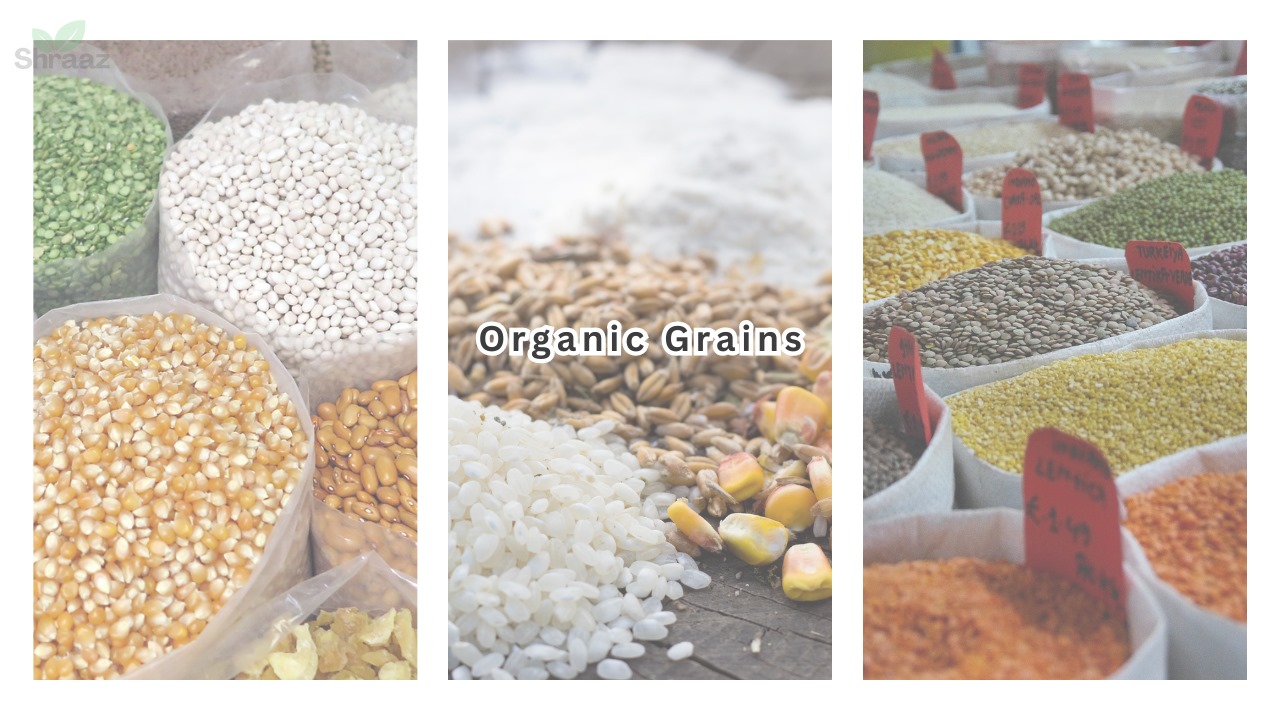Introduction to Organic Grains
Definition of Organic Grains
Organic grains are crops grown without synthetic pesticides, fertilizers, genetically modified organisms (GMOs), or other harmful chemicals. These grains are produced following organic farming practices that promote environmental sustainability, soil health, and human health. Organic farming avoids the use of artificial chemicals and relies on natural methods like crop rotation, composting, and biological pest control to maintain healthy crops and ecosystems.
Why Organic Farming Matters
Organic farming is important for several reasons:
- Health benefits: Organic grains are free from chemical residues and tend to have a higher nutrient density due to the healthier soils in which they grow.
- Environmental sustainability: Organic farming practices reduce soil erosion, conserve water, and promote biodiversity. They also help decrease pollution from chemical fertilizers and pesticides, making organic farming more eco-friendly than conventional methods.
Overview of Ancient Grains and Their Popularity
Ancient grains such as quinoa, amaranth, millet, buckwheat, and farro have become increasingly popular in recent years due to their nutritional benefits and versatility in cooking. These grains have been cultivated for thousands of years and are often referred to as “superfoods” because of their dense nutrient content and health advantages.
- Nutritional benefits: Ancient grains are packed with fiber, vitamins, minerals, and antioxidants. Many of them are also gluten-free, making them suitable for people with gluten sensitivities.
- Health-conscious consumers: As people become more aware of the link between diet and health, ancient grains have gained attention as healthier alternatives to refined grains like wheat and rice.
This article explores the health benefits of organic grains, focusing on several key grains, including quinoa, amaranth, millet, buckwheat, and farro. It compares their nutritional profiles, culinary uses, and potential advantages to provide a comprehensive guide for incorporating these grains into a healthy diet.
For a broader discussion of the overall organic foods beyond just organic grains, check out The Complete Guide to Organic Food/Edibles: Benefits, Characteristics, and Future Trends.
The Health Benefits of Organic Grains
Nutritional Benefits of Organic Grains
Organic grains offer several nutritional advantages over conventionally grown grains:
- Higher nutrient density: Because organic farming practices prioritize soil health, organic grains often have a higher concentration of essential vitamins and minerals, such as magnesium, phosphorus, and B vitamins.
- Rich in fiber: Organic grains are a great source of dietary fiber, which promotes healthy digestion, supports heart health, and aids in weight management.
- Absence of harmful chemicals: Organic grains are free from synthetic pesticides and herbicides, which can accumulate in conventionally grown crops and potentially harm human health.
General Health Benefits of Organic Grains
Organic grains are associated with numerous health benefits, including:
- Heart health: Organic grains like quinoa, amaranth, and buckwheat are rich in magnesium and other nutrients that support heart health.
- Blood sugar control: Many organic grains have a low glycemic index, which helps regulate blood sugar levels and reduces the risk of diabetes.
- Antioxidant properties: Organic grains contain higher levels of antioxidants, which protect the body against oxidative stress and reduce the risk of chronic diseases like cancer and heart disease.
- Better digestion: The high fiber content in organic grains helps maintain a healthy digestive system and can alleviate issues like constipation.
Why Organic Matters for Grains
Organic farming practices play a crucial role in determining the quality of grains:
- Soil health: Organic grains are grown in nutrient-rich soil, which enhances their nutritional content. Healthier soil means healthier grains, as the plants can absorb more vitamins and minerals.
- Contaminant-free: Organic grains are less likely to contain harmful residues from chemical fertilizers and pesticides, making them a safer and healthier choice for consumers.
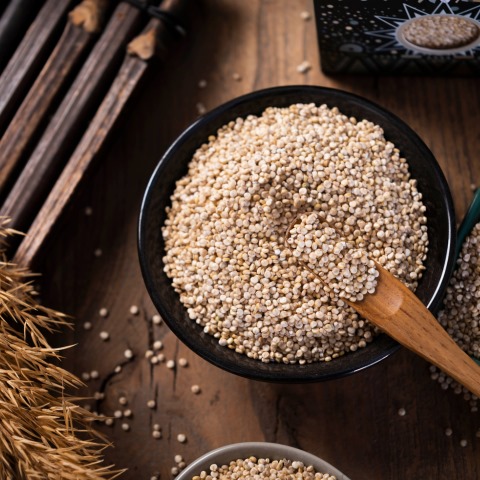
Quinoa
Origin and History
Quinoa is an ancient grain native to South America, particularly the Andes region. It was a staple food for the Incas, who referred to it as the “Mother of all grains.” Quinoa has been cultivated for thousands of years and is known for its resilience in harsh growing conditions.
Nutritional Profile
Quinoa is often referred to as a “complete protein” because it contains all nine essential amino acids, making it an excellent protein source for vegetarians and vegans. Its nutrient profile includes:
- Fiber: High in dietary fiber, aiding digestion and promoting gut health.
- Minerals: Rich in magnesium, potassium, iron, calcium, and phosphorus.
- Vitamins: Contains important B vitamins, including B6 and folate.
| Nutrient | Amount per 100g (cooked) |
| Protein | 4.1g |
| Fiber | 2.8g |
| Magnesium | 64mg |
| Iron | 1.5mg |
Health Benefits
- Blood sugar regulation: Quinoa has a low glycemic index, meaning it releases sugar slowly into the bloodstream, helping maintain stable blood sugar levels.
- Heart health: The magnesium in quinoa supports cardiovascular health by relaxing blood vessels and reducing the risk of hypertension.
- Digestive health: Its high fiber content supports a healthy digestive system and may aid in weight management by increasing feelings of fullness.
Culinary Uses
Quinoa is highly versatile and can be used in a wide variety of dishes, such as:
- Salads: Quinoa can serve as the base for nutritious salads with vegetables, herbs, and dressings.
- Soups and stews: Add quinoa to soups and stews for added protein and texture.
- Breakfast porridge: Quinoa can be cooked into a warm, satisfying porridge, often sweetened with fruits and nuts.
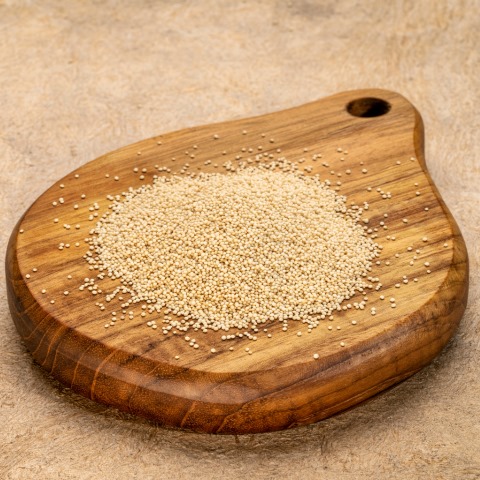
Amaranth
Origin and History
Amaranth is another ancient grain, originally cultivated by the Aztecs in Central and South America. It was a staple food in the Aztec diet and was even used in religious ceremonies. Its historical significance is mirrored by its growing popularity today, particularly among those seeking gluten-free and nutrient-dense food options.
Nutritional Profile
Amaranth is considered a nutritional powerhouse, offering a wealth of protein, fiber, and micronutrients. It is also gluten-free, making it suitable for those with celiac disease or gluten sensitivities. Key nutrients include:
- Protein: High protein content for a grain, with around 13-14% by weight.
- Micronutrients: Rich in magnesium, phosphorus, manganese, calcium, and iron.
- Fiber: High fiber content, which supports digestive health and helps in maintaining a healthy weight.
| Nutrient | Amount per 100g (cooked) |
| Protein | 3.8g |
| Fiber | 2.1g |
| Magnesium | 65mg |
| Calcium | 47mg |
Health Benefits
- Anti-inflammatory properties: Amaranth is rich in antioxidants, which help reduce inflammation in the body. This can be especially beneficial for people with chronic inflammatory conditions like arthritis.
- Bone health: Its high calcium content supports bone density, making it a good option for maintaining bone health.
- Cholesterol management: Amaranth has been shown to help lower LDL (bad) cholesterol levels, contributing to heart health.
Culinary Uses
Amaranth can be used in various culinary applications, including:
- Porridge: Cooked as a porridge for a nutritious breakfast, often sweetened with honey, fruits, or nuts.
- Smoothies: Amaranth can be blended into smoothies for added fiber and protein.
- Baking: It can be used in baking, or added to breads, muffins, or pancakes for a boost of nutrition.
- Popped Amaranth: Amaranth seeds can be popped like popcorn and used as a crunchy topping for salads or yogurt.
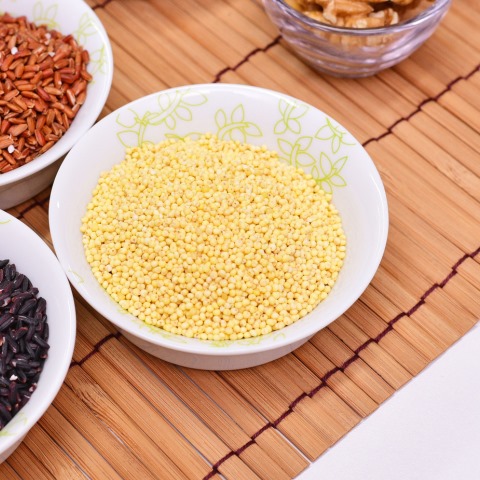
Millet
Origin and History
Millet is an ancient grain that originated in Africa and Asia, where it has been a staple food for thousands of years. It is still widely consumed in countries like India and Nigeria, where it forms an integral part of the diet.
Nutritional Profile
Millet is highly nutritious, offering a good balance of protein, fiber, and essential minerals. It is also gluten-free and alkaline, which may support digestive health. Nutritionally, it provides:
- Magnesium: Helps regulate blood pressure and supports heart health.
- Phosphorus: Important for bone and tissue repair.
- Fiber: A rich source of dietary fiber, promoting digestive health and preventing constipation.
| Nutrient | Amount per 100g (cooked) |
| Protein | 3.5g |
| Fiber | 1.3g |
| Magnesium | 44mg |
| Phosphorus | 100mg |
Health Benefits
- Promotes digestion: Millet is rich in fiber, which helps to keep the digestive system functioning smoothly, preventing issues like constipation and irritable bowel syndrome (IBS).
- Supports blood sugar management: With a low glycemic index, millet releases glucose slowly into the bloodstream, making it an ideal food for people managing diabetes.
- Rich in antioxidants: Millet contains powerful antioxidants that protect cells from damage caused by oxidative stress, which can lower the risk of chronic diseases.
Culinary Uses
Millet is highly versatile in the kitchen, and its mild flavor makes it easy to incorporate into various dishes:
- Porridge: Millet can be cooked into a creamy porridge, ideal for breakfast.
- Grain bowls: It can be used as a base for grain bowls, combined with vegetables, proteins, and sauces.
- Side dish: Cooked millet makes for a great rice alternative, pairing well with curries and stews.
- Baked goods: Millet flour can be used in baking bread, muffins, or even pancakes.
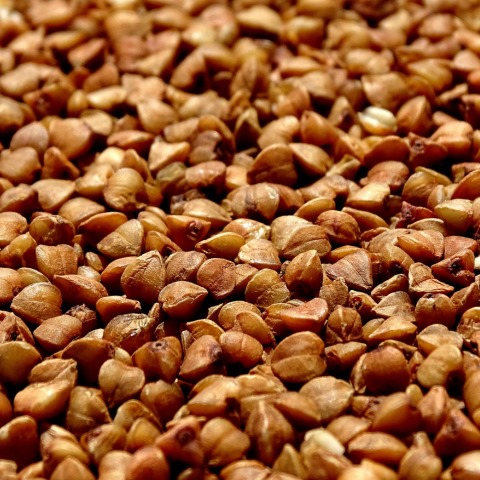
Buckwheat
Origin and History
Despite its name, buckwheat is not related to wheat and is actually a seed, often referred to as a pseudocereal. It originated in Southeast Asia and later spread to Europe and Russia, where it became a key ingredient in traditional dishes like buckwheat pancakes and soba noodles.
Nutritional Profile
Buckwheat is nutritionally dense, offering high levels of protein, fiber, and essential nutrients like flavonoids and magnesium. It is gluten-free and also contains resistant starch, which acts as a prebiotic to support gut health. Key nutrients include:
- Protein: Rich in high-quality protein, especially lysine, which is often lacking in other grains.
- Flavonoids: Especially high in rutin, a potent antioxidant known for its anti-inflammatory properties.
- Magnesium: Supports healthy blood pressure and overall cardiovascular health.
| Nutrient | Amount per 100g (cooked) |
| Protein | 3.4g |
| Fiber | 2.7g |
| Magnesium | 51mg |
| Rutin (flavonoid) | High |
Health Benefits
- Heart health: Buckwheat contains high levels of rutin, which helps improve circulation and reduces cholesterol, benefiting cardiovascular health.
- Blood sugar control: With a low glycemic index, buckwheat helps to regulate blood sugar levels, making it a suitable option for those managing diabetes.
- Anti-inflammatory properties: Buckwheat’s rich antioxidant content helps reduce inflammation in the body, offering protection against diseases like arthritis and certain cancers.
Culinary Uses
Buckwheat can be incorporated into various dishes, including:
- Noodles: Buckwheat flour is used to make soba noodles, a popular dish in Japanese cuisine.
- Pancakes: Buckwheat flour is often used to make pancakes, offering a gluten-free alternative.
- Porridge: Cooked buckwheat groats make a hearty breakfast porridge, often sweetened with fruits and honey.
- Baked goods: Buckwheat flour is used in gluten-free baking, from bread to cakes and cookies.

Farro
Origin and History
Farro is an ancient grain that has been cultivated for over 2,000 years, originating in Mesopotamia. It has been a staple in the Mediterranean diet, particularly in Italy, where it is commonly used in soups and salads.
Nutritional Profile
Farro is rich in fiber, protein, and essential nutrients like magnesium, iron, and zinc. Unlike the previously mentioned grains, farro contains gluten, although it has a lower gluten content than modern wheat varieties. Its nutrient content includes:
- Fiber: Supports digestive health and helps to maintain regular bowel movements.
- Iron: Important for oxygen transport in the blood, helping to prevent anemia.
- Zinc: Supports immune function and wound healing.
| Nutrient | Amount per 100g (cooked) |
| Protein | 3.5g |
| Fiber | 3.5g |
| Iron | 2.1mg |
| Magnesium | 60mg |
Health Benefits
- Digestive health: Farro’s high fiber content promotes a healthy digestive system and may help prevent constipation.
- Blood sugar regulation: Although farro contains gluten, its slow-release carbohydrates help to stabilize blood sugar levels, reducing the risk of blood sugar spikes.
- Antioxidant properties: Farro contains antioxidants that combat inflammation and protect against oxidative stress, which may reduce the risk of chronic diseases.
Culinary Uses
Farro is a versatile grain that can be used in a variety of dishes, such as:
- Salads: Farro is often used in cold salads, paired with fresh vegetables, herbs, and vinaigrette.
- Soups and stews: Farro can be added to soups and stews for added texture and nutrition.
- Grain bowls: Farro makes a hearty base for grain bowls, paired with roasted vegetables and proteins like chicken or tofu.
Comparing Organic Grains
Nutritional Comparisons
Each organic grain provides distinct nutritional benefits, making them unique in their health contributions. Below is a side-by-side comparison of the key nutrients across quinoa, amaranth, millet, buckwheat, and farro, showcasing their variations in protein, fiber, and essential minerals.
| Grain | Protein (g) | Fiber (g) | Magnesium (mg) | Iron (mg) | Calcium (mg) | Gluten-Free |
| Quinoa | 4.1 | 2.8 | 64 | 1.5 | 17 | Yes |
| Amaranth | 3.8 | 2.1 | 65 | 2.1 | 47 | Yes |
| Millet | 3.5 | 1.3 | 44 | 0.6 | 8 | Yes |
| Buckwheat | 3.4 | 2.7 | 51 | 1.3 | 18 | Yes |
| Farro | 3.5 | 3.5 | 60 | 2.1 | 15 | No |
Key Takeaways:
- Quinoa: Best for complete protein needs and rich in magnesium, making it excellent for muscle and heart health.
- Amaranth: High in calcium, making it beneficial for bone health and inflammation reduction.
- Millet: Good for digestive health due to its alkaline properties and low glycemic index.
- Buckwheat: Known for heart health due to its rutin content and benefits for controlling blood sugar.
- Farro: While it contains gluten, farro is very high in fiber, supporting digestive health and heart health.
Health Benefits Summary
Different grains provide tailored health benefits depending on individual nutritional needs:
- For protein: Quinoa is a complete protein source, ideal for those on plant-based diets.
- For digestive health: Farro and buckwheat are particularly high in fiber, supporting gut health and regular digestion.
- For heart health: Buckwheat’s flavonoids, especially rutin, help in reducing cholesterol and protecting cardiovascular function.
- For bone health: Amaranth’s high calcium content is beneficial for maintaining strong bones and reducing the risk of osteoporosis.
Environmental Impact
Choosing organic grains not only benefits personal health but also supports environmental sustainability. Organic farming practices have a significantly lower environmental footprint compared to conventional farming. Here’s how different grains compare in terms of their environmental impact:
| Grain | Water Use | Carbon Footprint | Energy Efficiency |
| Quinoa | Moderate | Low | High |
| Amaranth | Low | Low | Moderate |
| Millet | Low | Very Low | High |
| Buckwheat | Moderate | Low | Moderate |
| Farro | High | Moderate | Low |
Sustainability Factors:
- Water use: Millet and amaranth require less water to grow, making them more drought-resistant crops.
- Carbon footprint: Organic grains like quinoa and amaranth generally have a lower carbon footprint due to organic farming practices.
- Energy efficiency: Millet is among the most energy-efficient grains, with a low environmental impact overall.
How to Incorporate Organic Grains into Your Diet
Meal Planning Tips
Incorporating organic grains into your diet is easy with a few simple swaps. Here are some practical tips:
- Substitute grains: Use quinoa or millet instead of rice or pasta as the base of your meals for added nutrients and protein.
- Mix it up: Create grain bowls with combinations of different organic grains, like quinoa and farro, topped with vegetables, proteins, and dressings.
- Use in baking: Amaranth, buckwheat, and millet flour can replace conventional wheat flour in baked goods, providing gluten-free alternatives for bread, muffins, and pancakes.
- Breakfast options: Swap your regular oats for quinoa, buckwheat, or amaranth to create high-protein, fiber-rich breakfast porridge.
Recipe Ideas
Here are a few recipe ideas to help you incorporate these grains into your meals:
- Quinoa Salad: Toss cooked quinoa with spinach, cherry tomatoes, cucumber, feta cheese, and a lemon vinaigrette for a quick and nutritious salad.
- Amaranth Porridge: Cook amaranth with almond milk, then top with fresh berries, honey, and nuts for a hearty breakfast.
- Buckwheat Pancakes: Use buckwheat flour to make gluten-free pancakes, perfect for a weekend brunch.
- Farro Soup: Add cooked farro to vegetable or chicken soup for added texture and fiber.
Storage Tips
To ensure that your organic grains stay fresh and maintain their nutritional value, follow these storage tips:
- Cool, dry place: Store grains in an airtight container in a cool, dark, and dry place to avoid spoilage and insect infestation.
- Refrigeration: For long-term storage, grains can be kept in the refrigerator or freezer, particularly if the climate is humid.
- Buy in bulk: Purchasing grains in bulk can be a cost-effective way to stock up, but make sure to store them properly to avoid waste.
Buying Guide
When purchasing organic grains, here are a few factors to consider:
- Organic certification: Look for grains labeled with organic certification from reputable organizations such as USDA Organic.
- Source locally: Whenever possible, buy from local farmers or markets to ensure freshness and support sustainable agricultural practices.
- Bulk buying: Many grocery stores offer organic grains in bulk, allowing you to buy exactly the amount you need and minimize packaging waste.
Conclusion
Organic grains offer a multitude of health and environmental benefits. Their high nutrient content, absence of harmful chemicals, and variety of health-promoting properties make them a key component of a balanced diet. Additionally, choosing organic supports sustainable farming practices that protect the environment and promote biodiversity.
Diversifying your grain intake by incorporating different organic grains like quinoa, amaranth, millet, buckwheat, and farro into your meals can provide numerous health benefits. Each grain offers unique nutritional advantages and culinary possibilities, ensuring you never run out of delicious and nutritious meal ideas.
Organic grains are an excellent addition to any diet, whether you’re looking to improve your health, manage a chronic condition, or simply enjoy the variety and flavor they bring to the table. By making organic grains a staple in your diet, you are making a positive choice for both your personal health and the health of the planet.
Appendix
Nutritional Comparison Table
Below is a detailed breakdown of the nutritional content per 100g of cooked quinoa, amaranth, millet, buckwheat, and farro.
| Grain | Calories | Protein (g) | Fiber (g) | Magnesium (mg) | Iron (mg) | Calcium (mg) |
| Quinoa | 120 | 4.1 | 2.8 | 64 | 1.5 | 17 |
| Amaranth | 102 | 3.8 | 2.1 | 65 | 2.1 | 47 |
| Millet | 119 | 3.5 | 1.3 | 44 | 0.6 | 8 |
| Buckwheat | 92 | 3.4 | 2.7 | 51 | 1.3 | 18 |
| Farro | 170 | 3.5 | 3.5 | 60 | 2.1 | 15 |
Recipe Suggestions
- Quinoa Salad with Fresh Herbs: Mix cooked quinoa with parsley, cilantro, cucumber, and a lemon-tahini dressing.
- Amaranth Smoothie Booster: Blend cooked amaranth into a smoothie with spinach, banana, and almond milk for added fiber.
- Millet Stir-fry: Use millet instead of rice in a stir-fry with tofu, bell peppers, and soy sauce.
- Buckwheat and Mushroom Soup: Combine buckwheat with mushrooms and vegetable broth for a hearty, gluten-free soup.
- Farro Risotto: Substitute farro for arborio rice in a creamy risotto, adding mushrooms and parmesan for flavor.

